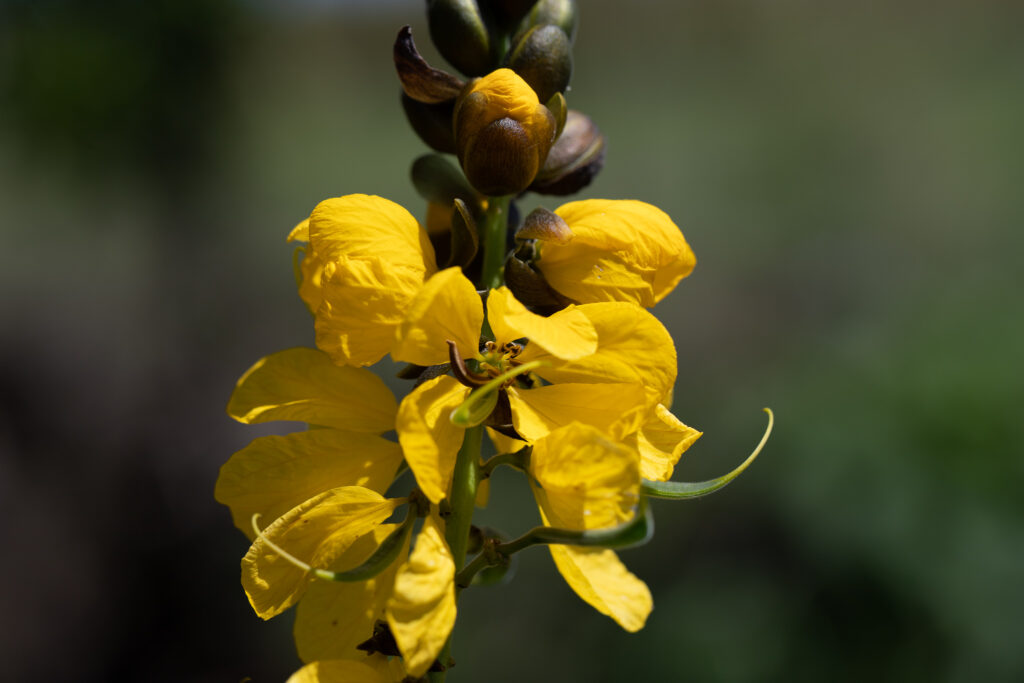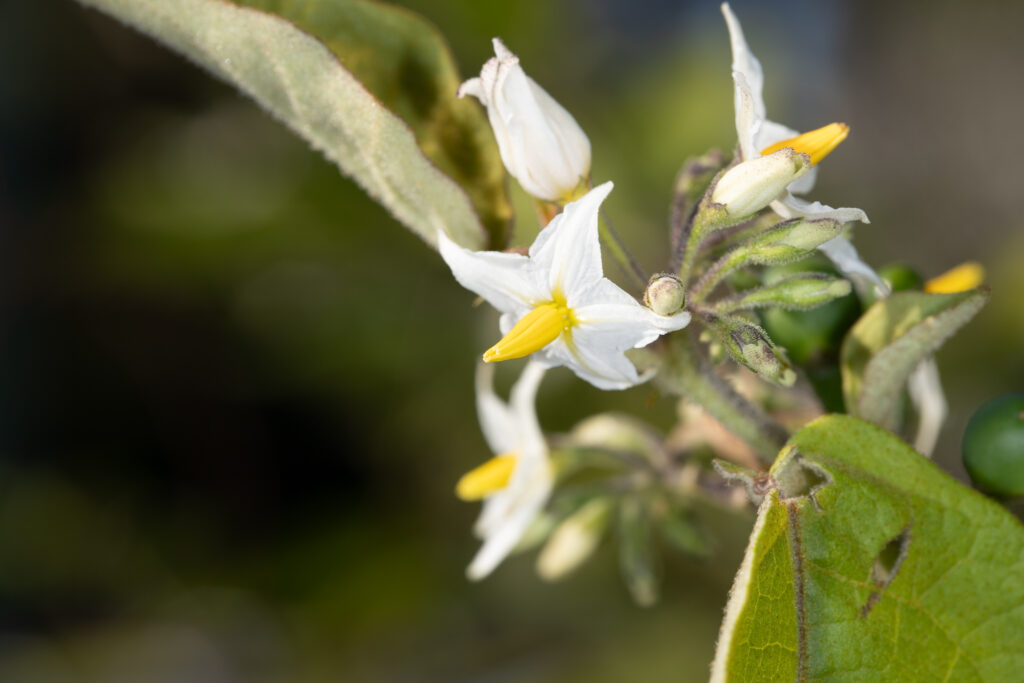30 September. This is the last stretch of the trip. The last chance of finding bees before starting to wrap up this expedition. It has been a mixed bag for finding bees for studying vibrations. Perhaps is the cool, rainy days we have encountered, or Spring, or trying to cover too much ground, or any other reason that makes field work in a new continent hard. But it has been a blast and somehow we have managed to scrape a few measurements in bees across Australia. Today is our last push and the bright sun and blue skies with relatively little wind are promising.

We leave Hervey Bay after exploring some Solanum torvum growing behind the campground. We drive down the Bruce Highway and Daniel has an inspired suggestion to get off and explore a side road. With the corner of my eye I spy a large shrub with bright yellow flowers in a spike. ‘Stop here’, I ask Daniel who pulls over near a farm. We climb down to the river bank where I saw the plant and confirm is the (exotic) Senna didymobotrya with large, buzz pollinated flowers. Within seconds we hear the deep buzz of a large carpenter bee (Xylocopa sp.) above our heads. With some tricks and patience we sample a few bees including Xylocopa. We are thrilled of this strike of luck to locate the bees that will allow us to close the trip with more observations.
A farmer comes by intrigued by our excitement at a weedy plant and we tell him about the Buzz Bus, he allows us to go deeper up the river bank to look for more buzz pollinated flowers of Solanum and Senna that he says are plentiful here. ‘Just watch out for the carcasses of the feral pigs we shot last week!’, he warns us. We find many bees of different species and collect buzz after buzz in our mobile lab. This is the most productive day of the whole Eastern trip!

The day has been a complete success, and we pull over late in the afternoon on our next campsite at the edge of a pine plantation. How here to cut down Eucalyptus forests to plant Scott Pines (Pinus sylvestris), while the rest of the world cut their native forests to plant Eucalyptus?
The usual brush turkeys watch us set up camp, and we spend the evening cooking, measuring and photographing bees. A pair of kookaburras huddle together above our heads as the sun sets. The campsites light up their fire pits as the darkness quickly engulfs everybody. Tomorrow we head to Brisbane to return the Buzz Bus and end three weeks of wonderful fieldwork.